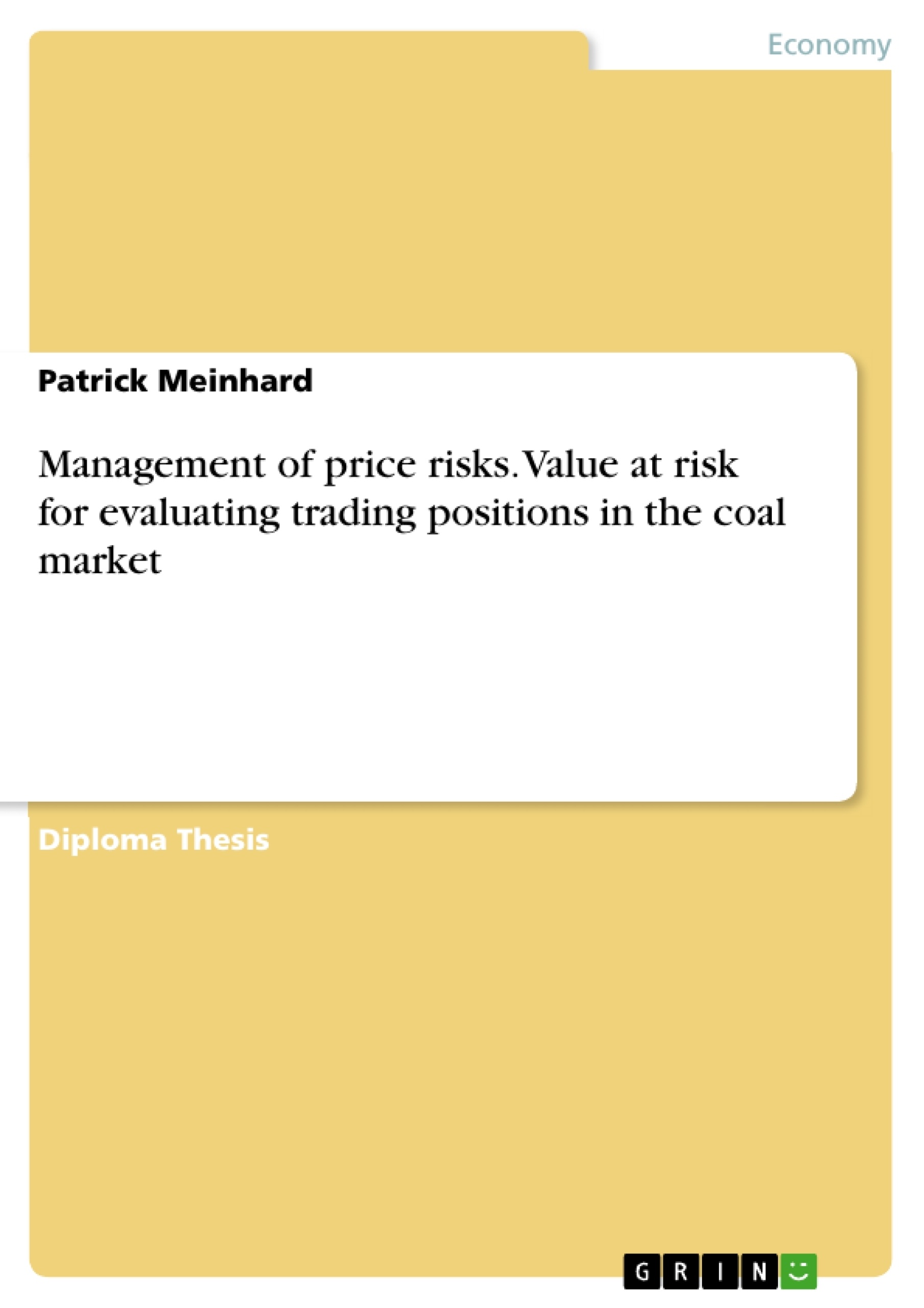Two words deeply determine the world economic since the 90’s of the 20thcentury – “risk” and “RiskManagement”. However, coming to the result that these concerns have been ignored before that time would be seriously misinterpreted. Early trials to identify and analyse risks could be recognized by archaeological discoveries in the Euphrates-Tigris area and have been dated around the year 3.200 B.C. The economy already realized the importance of risks andRisk Managementat the beginning of modern economics. Today this concern is handled more exactly than in the Ancient World, with full awareness and more systematically. Taking risks more systematically into consideration is caused by more rapidly changing basic conditions in the world markets. But, what are the reasons for these developments? Some decades before the world economy proceeded in relative predictable channels and followed more or less fixed inherent laws. This could especially be noticed in many commodity markets, like the steam coal market. This market as a commodity market will be analysed in more detail in the scope of this diploma thesis. First hints for upcoming changes have been given by the oil crises in 1973. Up to this time, exorbitant increasing commodity prices could be observed only a few times and were not as serious. However, such increasing commodity prices and especially oil prices did not shake markets for twenty-five years and it turned out that the explosion of commodity prices could not be recognized till the end of the 20thcentury.
Inhaltsverzeichnis (Table of Contents)
- INTRODUCTION TO THE TOPIC.
- BASICS AND DEFINITIONS.
- DEFINITION OF RISK
- DESCRIPTION OF RISK MANAGEMENT
- The definition of Risk Management..
- The Risk Management Process..
- Risk Management strategies......
- FINANCIAL VERSUS COMMODITY POSITIONS AND RELATED RISK REDUCTION
- Differences between financial and commodity positions.....
- Risk reduction for positions..
- EVALUATING PRICE RISKS OF POSITIONS BY THE VALUE-AT-RISK
- THE PRINCIPLE OF THE VALUE-AT-RISK APPROACH....
- Value-at-risk related measures of (price) risks.
- Depicting the value-at-risk..
- The expression of the approach
- Premises for the calculation.
- The value drivers
- The various value-at-risk approaches.
- The variance-covariance method
- The Historical Simulation
- The Monte Carlo Simulation
- EVALUATING APPLIED VALUE-AT-RISK APPROACH BY BACK-TESTING.
- A CRITICAL RECOGNITION OF THE VALUE-AT-RISK'S SERVICES
- ALTERNATIVE CONCEPTS FOR MEASURING PRICE RISKS.
- EVALUATING POSITIONS BY THE VALUE-AT-RISK
- Conditions and barriers for managing price risks by the value-at-risk.
- Value-at-risk based Risk Management in the financial sector.
- MANAGING PRICE RISKS IN THE INTERNATIONAL COAL TRADING BUSINESS... 545
- OUTLINING THE INTERNATIONAL STEAM COAL MARKET.
- RAG TRADING GMBH – PLAYER IN THE INTERNATIONAL COAL TRADING BUSINESS
- EVALUATING POSITIONS BY THE VALUE-AT-RISK AT RAG TRADING GMBH
- Depicting relevant risks at RAG Trading GmbH.
- Taken steps for evaluating trading positions at RAG Trading GmbH..
- Establishing a value-at-risk based evaluating process...
- RECOMMENDATION
- Risk management in financial and commodity markets
- The Value-at-Risk approach for evaluating price risks
- Application of Value-at-Risk in the international coal trading business
- Risk identification and mitigation strategies in the coal market
- Case study of RAG Trading GmbH and its trading operations
- Introduction to the Topic: This chapter introduces the context and relevance of managing price risks in the international coal trading business. It highlights the importance of effective risk management strategies in this industry.
- Basics and Definitions: This chapter provides fundamental definitions of risk, risk management, and related concepts. It also explores the differences between financial and commodity positions and the associated strategies for risk reduction.
- Evaluating Price Risks of Positions by the Value-at-Risk: This chapter focuses on the Value-at-Risk (VaR) approach for assessing price risks. It outlines the core principles of VaR, including its various methods of calculation and the evaluation of its effectiveness through back-testing. The chapter also examines alternative concepts for measuring price risks.
- Managing Price Risks in the International Coal Trading Business: This chapter delves into the specific application of the VaR approach in the international coal trading market. It describes the characteristics and complexities of the coal market, provides a case study of RAG Trading GmbH, and explores how VaR can be utilized for managing price risks within this company's trading operations.
Zielsetzung und Themenschwerpunkte (Objectives and Key Themes)
This work aims to provide an analysis of the Value-at-Risk approach, a common method for evaluating price risks in the financial sector, and its applicability to the international coal trading business. The study delves into the principles and methodology of the Value-at-Risk model, explores its strengths and limitations, and evaluates its potential for managing price risks in a specific context – the trading activities of RAG Trading GmbH, a prominent player in the international coal market.
Zusammenfassung der Kapitel (Chapter Summaries)
Schlüsselwörter (Keywords)
The text focuses on the core concepts of risk management, Value-at-Risk, price risk evaluation, international coal trading, and the case study of RAG Trading GmbH. The study explores the application of financial risk management techniques in the commodity market, specifically examining the use of the Value-at-Risk approach for managing price risks in the context of the coal trading business.
- Quote paper
- Patrick Meinhard (Author), 2005, Management of price risks. Value at risk for evaluating trading positions in the coal market, Munich, GRIN Verlag, https://www.grin.com/document/54215



